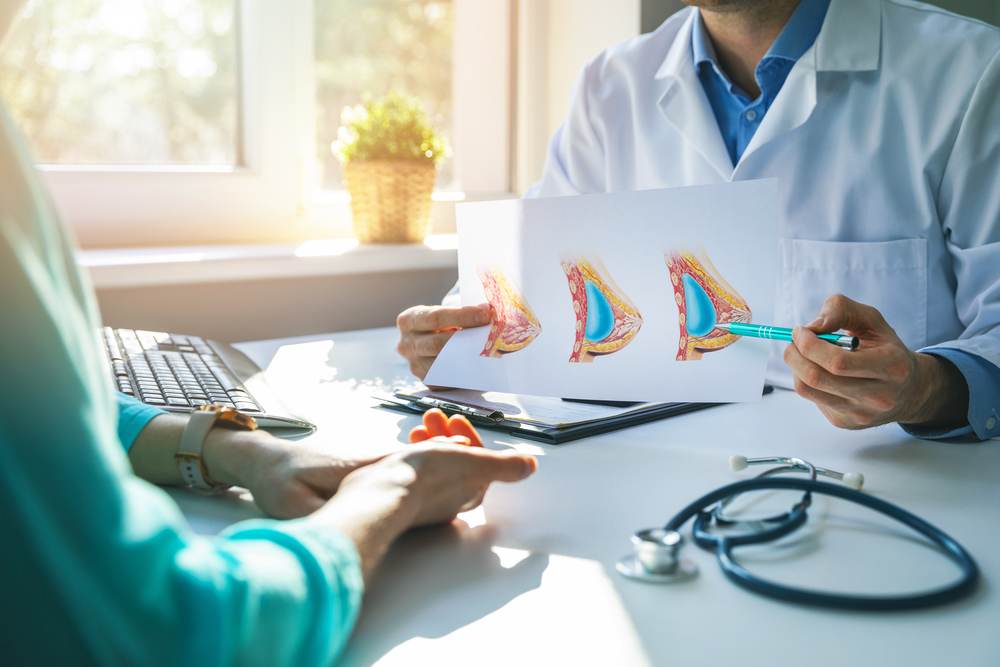Breast Prosthesis vs. Breast Reconstruction After Mastectomy
6 min read

Breast cancer comes with a lot of decisions. If your treatment plan includes a mastectomy, one of those decisions is whether you’re going to have the breast reconstructed, use a breast prosthesis, or perhaps nothing at all.
Let’s take a look at each as you consider options and what’s best for you after breast cancer surgery.
I’m Going to Have a Mastectomy: What Should I Consider Related to Breast Reconstruction?
If you’ve determined with your breast cancer surgeon that a mastectomy is the right choice for you, it’s a good time to consider your thoughts on whether you’d like to have breast reconstruction or “go flat” as it’s sometimes called. One of the most important aspects of this decision is the emotional and psychological impact that it can have on you. Even if you’re cancer free, body changes can lead to challenges with confidence and self-esteem.
One of the most common questions most women have is, “What are my choices for breast reconstruction?” Your surgeon will talk with you and possibly bring in a plastic surgeon to consult about the options for rebuilding the breast so that it matches the other one. They may even discuss reducing the other side so that both are the same size and shape. However, you don’t have to have reconstructive surgery.
There are other options besides reconstructive breast surgery that you may want to consider. There is no right answer. This is about your comfort level.
How Does Breast Reconstruction Work?
Breast reconstruction involves the surgical re-creation of one or both breasts. There are two main types of breast reconstruction methods:
- Breast implants
- Tissue flaps
Breast implants can be silicone or saline and come in different shapes and sizes. Tissue flaps use your own tissue, extracted from another part of your body to form the reconstructed breast. This will offer a more natural look than implants but will leave more surgical scarring because there will be a location on your body where fat was removed to place into the breast.
Implants can be put in during the same surgery to remove the breast. This avoids a second surgery. But you don’t have to make that decision right away. A delayed reconstruction means that you would return for a second surgery after you’ve recovered from the mastectomy, but also gives you more time to make a decision about your preferences. This can be helpful because not everyone is ready to make this decision at the same time they’re making breast cancer treatment decisions.
The surgeon who will perform the reconstructive surgery is either trained in oncoplastics as a breast cancer surgeon or they are a plastic surgeon who specializes in helping women with reconstruction after breast cancer surgery. They will also discuss the right timing for you.
What is Breast Prosthesis?
A breast prosthesis is an artificial breast worn inside of your clothes to create the appearance of a real breast. There are temporary breast prostheses and permanent breast prostheses. Some benefits of breast prostheses are that they don’t require surgery, they can easily be replaced if needed, and you can easily change size. Some drawbacks are that some people don’t find them very comfortable, they require washing and storage, and they need to be replaced every few years.
There are many different types of breast prostheses, including different shapes, sizes, and skin colors.
Common types of breast prostheses include:
- Full prosthesis. This is designed to go against the chest where all breast tissue has been removed. This is good for someone who has had a full mastectomy.
- Partial prosthesis. A partial prosthesis is for women who have only had part of the breast removed. They can help to fill in the missing space when worn in a bra.
- Shell prosthesis. A shell prosthesis may be used if the breasts are different sizes. A soft shell of silicone is worn over the smaller breast so that it matches the size of the larger one.
- Stick-on prosthesis. A stick-on prosthesis can be full or partial and sticks directly to the skin. These can be ideal for women who are more physically active or who are used to wearing a less supportive bra. These can be more versatile and more easily worn with certain types of clothing items like strapless dresses.
- Swim prosthesis. A swim prosthesis is specifically made to be worn in the water.
Breast Prosthesis vs. Reconstruction: What to Consider When Making a Decision
There are a variety of different factors to take into consideration when determining if a breast prosthesis or reconstruction is the best option for you. Breast reconstructions are a permanent solution. A breast prosthesis is a realistic solution but some may find them uncomfortable or may not like the way their bodies look when not wearing the prosthesis.
Here are some things to consider as you make your decision.
- The removal of a breast causes your body weight to change and shifts your balance which can cause your spine to slightly curve over time.
- You can create symmetry when wearing clothing with both options, although the prosthesis will need to be put in place each time you put on your clothes and may not be easy to wear with some clothes or swimwear.
- Breast implants have a lifespan of about 10 years. Depending on your age, are you OK with replacing the implant(s) in the future, possibly at your own cost?
- Are you concerned about how you will look to your partner or to yourself when undressed? Reconstruction will usually provide a look that’s closer to what you and your partner have been used to compared to using a prosthesis.
- Wearing a bra with the prosthetic breast requires extra steps when getting ready compared to simply wearing a regular bra with reconstructed breasts.
- Was there anything about your breasts you would have liked to change before you received a breast cancer diagnosis? It’s possible to reduce the size of the other breast to match a smaller reconstructed breast if you were considering a reduction. And vice versa, you can potentially increase your bust size if you’re able to get implants.
- There may be a financial impact to your decision. Insurance will usually cover reconstruction of the breast that had to be removed. However, work done on the other breast may not be covered and the cost could be an inhibiting factor.
It’s important to take some time to weigh out what you want and what will make you feel happy. Seeing your body change drastically when going through cancer treatment can be emotionally jarring. Taking steps like reconstructive surgery or getting a breast prosthesis may be helpful. It is important to also take steps to take care of your mental health, such as doing things that bring you joy and talking with a professional if needed. You want to make sure that you’re in a positive headspace before making any major decisions.
If neither breast reconstruction nor a prosthesis sounds like a good idea for you, it is okay to choose neither. You may find that learning to love your new body doesn’t require making any additional changes. There is absolutely nothing wrong with keeping your chest as is after a mastectomy, and you may find that this is the best option for you.
Breast Cancer Surgeons and Breast Reconstruction in Colorado
If you receive a breast cancer diagnosis, you’re going to meet with several cancer specialists, including a surgeon who will discuss the breast cancer removal surgery options and your options for reconstruction. In some cases you may also meet with the plastic surgeon.
Ask as many questions as you’d like to understand your options and the timing of them during your consultation(s). Many women have the reconstruction done at the same time the cancer is removed, but you don’t have to do that if the idea of both at once is overwhelming.
The Rocky Mountain Breast Specialists are here to help you navigate your cancer journey and discuss options. You might also be interested in our patients’ breast cancer survivor stories.
If you’d like to schedule a consultation, choose a location that’s convenient for you. We have breast cancer centers in the Denver area, Colorado Springs, Boulder and throughout the Front Range to serve you best.


